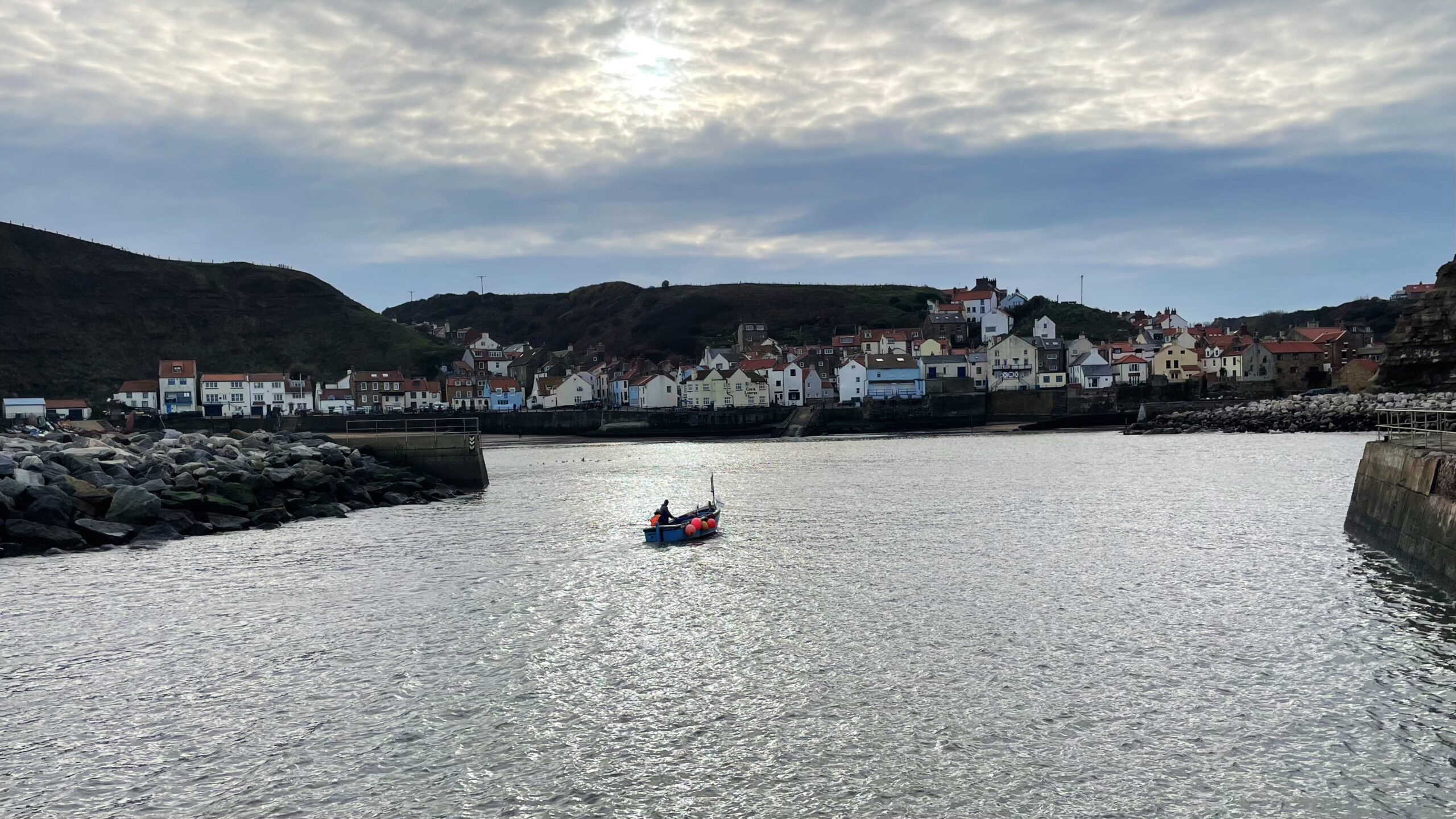Staithes clings to the North Yorkshire cliffs like a stubborn barnacle, its narrow alleys and huddled cottages whispering tales of smugglers, storms, and shipwrecks. Once a modest “staith” — a landing place for Seaton, a settlement mentioned in the Domesday Book — the village grew around its tiny harbour, its people as resilient as the rocks beneath their feet1“Parishes: Hinderwell”. A History of the County of York North Riding: Volume 2. Ed. William Page (London, 1923), British History Online. Web. 8 November 2025. https://www.british-history.ac.uk/vch/yorks/north/vol2/pp365-371..
But beneath this postcard charm lies a legend steeped in salt and sorrow. One wild night, when the sea roared and every fishing boat sought shelter in the bay, two figures battled through the waves — not sailors, but mermaids. Beautiful, desperate, and half-drowned, they struggled towards the faint glow of lamps beneath Cowbar Nab, seeking only to rest until the storm abated.
By dawn, the sea lay calm, but the village awoke to a spectacle that stirred both wonder and fear. The mermaids, with their long fair hair and glistening tails, lay stranded on the sands. The tide was out; the villagers were in. Curiosity turned quickly to cruelty. Captured and confined in the lock-up, the poor creatures were treated as monsters — pelted with stones, prodded with sticks, and mocked by children.
Weeks passed. Pity softened suspicion. The villagers grew used to their captives, even fond of them. The mermaids, though homesick, learned to smile at their gaolers and speak their strange, lilting tongue. Then, one morning, during a celebration by the shore, the pair saw their chance. While the crowd’s attention was elsewhere, they fled across the sand, tails flashing in the sun.
The villagers gave chase, shouting, throwing sticks, but the fugitives reached the surf and vanished beneath the foam. One surfaced once more, rose upon her tail, and cried out in fury:
“The sea shall flow to Jackdaws’ Well!”
The crowd laughed. Jackdaws’ Well lay far inland, near Seaton Garth, utterly safe from the sea’s reach. Yet time and tide have a habit of proving curses right. The cliffs began to crumble. Houses slid into the waves. The grocer’s shop where young James Cook once served his apprenticeship was among those to fall. Eventually, a storm came so fierce it took thirteen lives — and Jackdaws’ Well itself was swallowed by the sea.
Today, Staithes thrives on gentler sea states, protected by the armourstone blocks of Norwegian gneiss. Tourists wander its cobbled lanes, unaware that each lapping wave carries a whisper of that ancient curse. Locals still tell the tale to wide-eyed visitors: the two mermaids of Staithes, doomed by fear, freed by the sea. And as gulls wheel above the ruined cliffs, one might wonder — were they truly mermaids… or simply a pair of seals, mistaken, as humans so often are, for something beyond their understanding?
- 1“Parishes: Hinderwell”. A History of the County of York North Riding: Volume 2. Ed. William Page (London, 1923), British History Online. Web. 8 November 2025. https://www.british-history.ac.uk/vch/yorks/north/vol2/pp365-371.

Leave a Reply